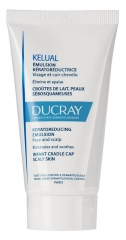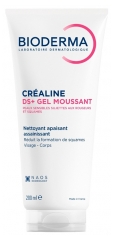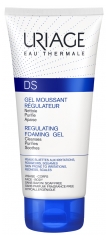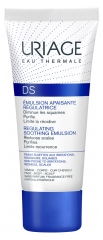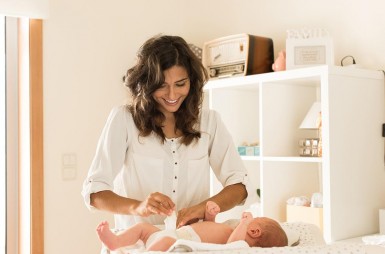Seborrhoeic dermatitis let’s put an end to irritation
Written by Paul Musset, Doctor in Pharmacy | published on | updated on 15/04/2024
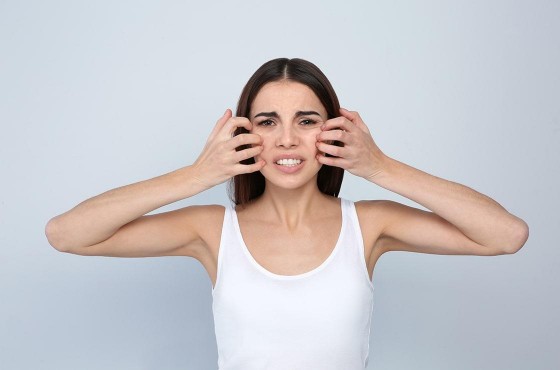
Seborrhoeic dermatitis is a chronic yet harmless skin disorder that mainly affects infants and adults. It affects 1 to 3 % of the French population. What are the symptoms of this dermatological condition? Is there any way to treat or prevent it?
Seborrhoeic dermatitis: some details
What is seborrhoeic dermatitis?
Seborrhoeic dermatitis is an inflammatory skin disorder affecting areas of oily skin that are rich in sebum.
What is sebum?
Sebum is secreted by the sebaceous glands that located in the skin’s dermis. It plays a key role in ensuring that your body functions effectively and has a number of beneficial effects:
- It forms part of the skin's lipidic film, a barrier that protects against environmental damage and dry skin;
- It keeps the scalp well moisturised;
- It creates a barrier to block bacteria and prevents them from entering the body.
Sebum and fungus are uncomfortable bedfellows: the cause of seborrhoeic dermatitis
The exact cause of this type of dermatitis has still not been fully identified. Nonetheless, a combination of two natural elements makes it more likely to develop. These are greasy skin (which is rich in sebum) and a sebum-loving genus of yeast known as Malassezia.
This fungus is found naturally on human skin. However, when it co-exists alongside sebum, an abnormal dermatological reaction occasionally arises.
The various forms of the condition tend to affect different parts of the body. In general, two types of dermatitis are prevalent:
- seborrhoeic dermatitis of the scalp and
- seborrhoeic dermatitis of the face.
Good to know
Excess sebum is not responsible for the onset of seborrhoeic dermatitis, despite what the name might suggest. “Seborrhoeic” simply signifies that this skin condition is primarily found in those areas of the body that are naturally rich in sebum.
Symptoms
The skin reactions seen vary according to the area of the body affected:
- Seborrhoeic dermatitis of the scalp is characterised by accelerated regeneration of the skin cells. This leads to large amounts of scaling and causes skin flakes of various thickness, similar to dandruff;
- Seborrhoeic dermatitis of the face presents as red patches covered in white scaling (erythematous squamous lesions). They are frequently concentrated in the fold on the chin, the furrows between the nose and the mouth or between the eyebrows.
This type of dermatitis always causes considerable itching.
A recurrent condition
Seborrhoeic dermatitis is a condition that has phases of recurrence and regression. The active phases are characterised by increased symptoms. The skin reactions then regress of their own accord or with treatment. The condition then “rests” until the onset of another attack.
Factors triggering seborrhoeic dermatitis
Research has not identified excess sebum as a probable cause of dermatitis. However, certain factors may significantly influence the occurrence of seborrhoeic dermatitis. These include:
- Parkinson’s Disease;
- Excessive, chronic alcohol consumption;
- Hyperhidrosis (excessive sweating);
- Stress;
- Fatigue;
- Obesity;
- Pregnancy;
- Cancer;
- Down's Syndrome;
- HIV;
- etc.
Moreover, people over the age of 65 are more commonly afflicted by this type of skin disorder.
Differential diagnoses
An outbreak of patches on the face does not necessarily mean that you have seborrhoeic dermatitis. There are many other skin conditions that present with very similar symptoms, such as psoriasis and atopic dermatitis. A simple consultation with a dermatologist will point you in the right direction.
Did you know?
Infants can also suffer from seborrhoeic dermatitis of the scalp. This is a very common phenomenon which is far more commonly known as “cradle cap”.
What are the treatments for seborrhoeic dermatitis?
Medical solutions
While seborrhoeic dermatitis is not at all serious, it can be very upsetting and uncomfortable, both physically and mentally (particularly when people stare or due to the itching). In the rare cases of wide-spread, debilitating dermatitis, antifungal or antimycotic treatments may be considered. Such treatments are prescription only.
Natural solutions to relieve seborrhoeic dermatitis of the face: the power of essential oils
Essential oils are an excellent natural remedy that can effectively treat the lesions associated with seborrhoeic dermatitis. Two essential oils with outstanding anti-inflammatory and anti-microbial properties are:
- tea-tree essential oil and;
- lavender essential oil.
Used together, they are particularly effective in soothing the skin and combating skin lesions.
Over-the-counter treatments for seborrhoeic dermatitis
Seborrhoeic dermatitis of the scalp: specialist shampoos
When the scalp is affected, the disorder usually presents as red patches and dandruff. To combat these minor symptoms of flaking, specialist shampoos, such as Nodé DS+ from Bioderma, can be an effective treatment. They act primarily on the Malassezia yeast responsible for causing dermatitis by minimising their growth.
Facial dermatitis: moisturising creams with squamo-reducing action
In terms of the face, treatments focus on the reduction of patches of sebo-squamous skin resulting from seborrhoeic dermatitis. The Laboratoires Ducray have developed their Kelual DS range to soothe the skin and eliminate dead cells from the epidermis using its active agents.
Things to avoid and precautions to take
Alongside a treatment based on essential oils or creams, appropriate hygiene will slow down the recurrence of the condition, particularly on the face. A very gentle cleanser should be used each day (micellar water or lotion), and soap should be avoided as it can cause significant irritation. It remains vital to keep the skin moisturised, but your moisturiser should be suitable for your skin type.
Seborrhoeic dermatitis is a skin disorder whose cause remains hard to identify. It is often confused with psoriasis. During an attack, the symptoms can be alleviated by using natural treatments based on essential oils, or skincare products that mitigate the effects of desquamation. An appropriate cleaning regime will also help to control the recurrent attacks which tend to be unpreventable.
Seborrhoeic dermatitis: three key takeaways:
- Seborrhoeic dermatitis is a chronic, yet harmless, skin condition;
- There are many natural and therapeutic ways of treating seborrhoeic eczema, but however it is treated, it is likely to recur;
- Seborrhoeic dermatitis mainly affects the scalp and the face.




